March 29
My travel agents, Jean and Ahdina Zunkel, have kindly arranged for me to spend the day with Angus Begg, a CNN award-winning television producer, and the first South African broadcast journalist to report from the chaos of Somalia in 1992. He went on to cover the Rwandan genocide of ’94 and South Africa’s first democratic elections the same year, for which he was nominated for the national public service radio awards.
It was these episodes in Somalia and Rwanda that took him the roundabout route to the fields of travel and environment, in which he now writes, produces and photographs. He found that the experience was as much a travel story as tracking gorillas or reviewing a luxury lodge in the Kruger tPark. He learnt about the role of people in travel too. With considerable experience in the various media since then – TV, print, radio, photography and the internet – Angus has gone on to cover every aspect of travel, whether rural communities clashing with wildlife, tracking the Serengeti migration, hiking Table Mountain or searching for that perfect the sauvignon blanc.
After breakfast, Angus and I meet at my hotel and are driven by Freedom to Mayfair and Fordsburg, areas of Joburg that tourists do not see. Angus is easy to be with, flexible and has a journalist’s knack for engaging people in easy conversation. The areas that we visit are full of a mix of Somali, Indian, Pakistani and Chinese. There we interact and have conversations with locals, including an older Somali fellow who does not want to have his photo taken. He thinks we take pictures because “we think they are monkeys.” After conversation, he allows that he doesn’t think I fall into that group, but still does not want to have his picture taken. An older couple from Botswana sits having coffee. They have been married for 48 years and seem to be enjoying the morning. A young Pakistani fellow stands, arms folded, in his food shop and a young Indian father is happy to show off his two young children in front of his pratha shop. At a coffee shop, two young women are inhaling hashish in order to relieve the stress of their bank jobs. A man and young boy have their hair cut on the street. A woman does beadwork at a downtown market.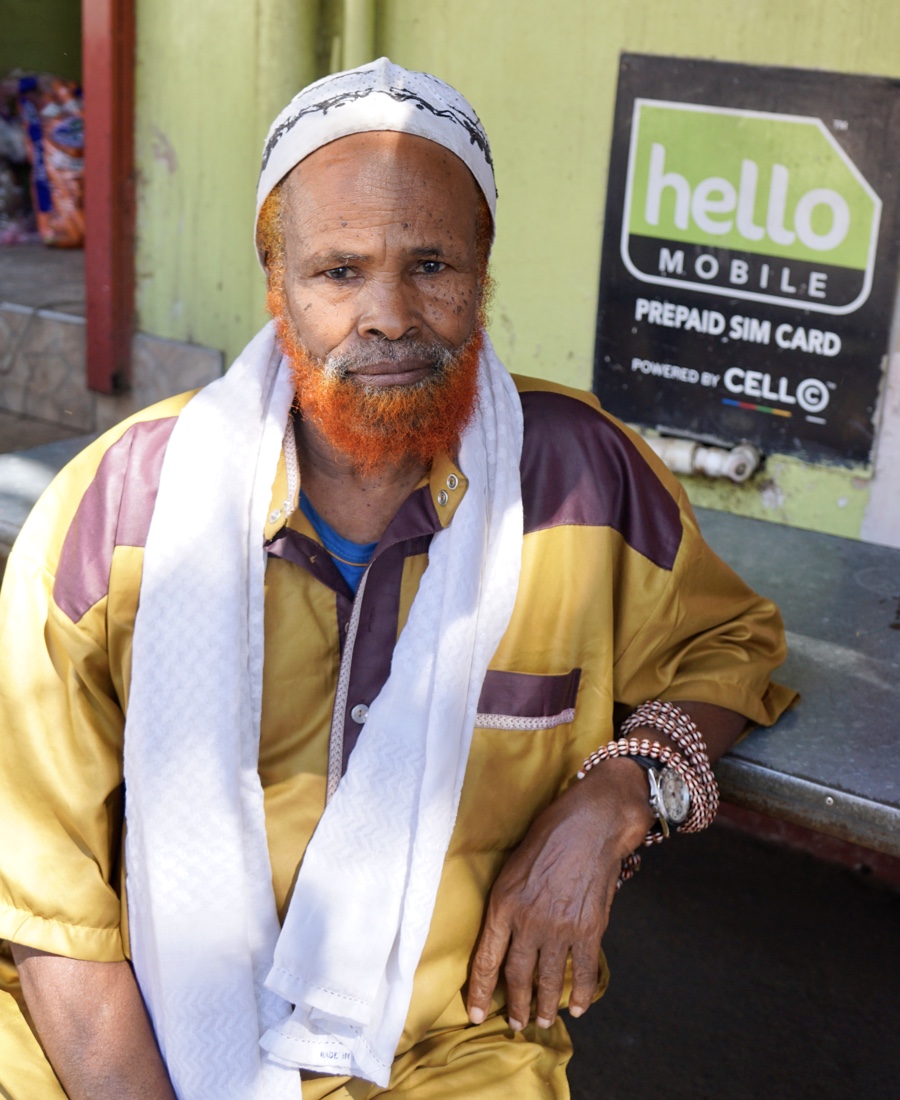 
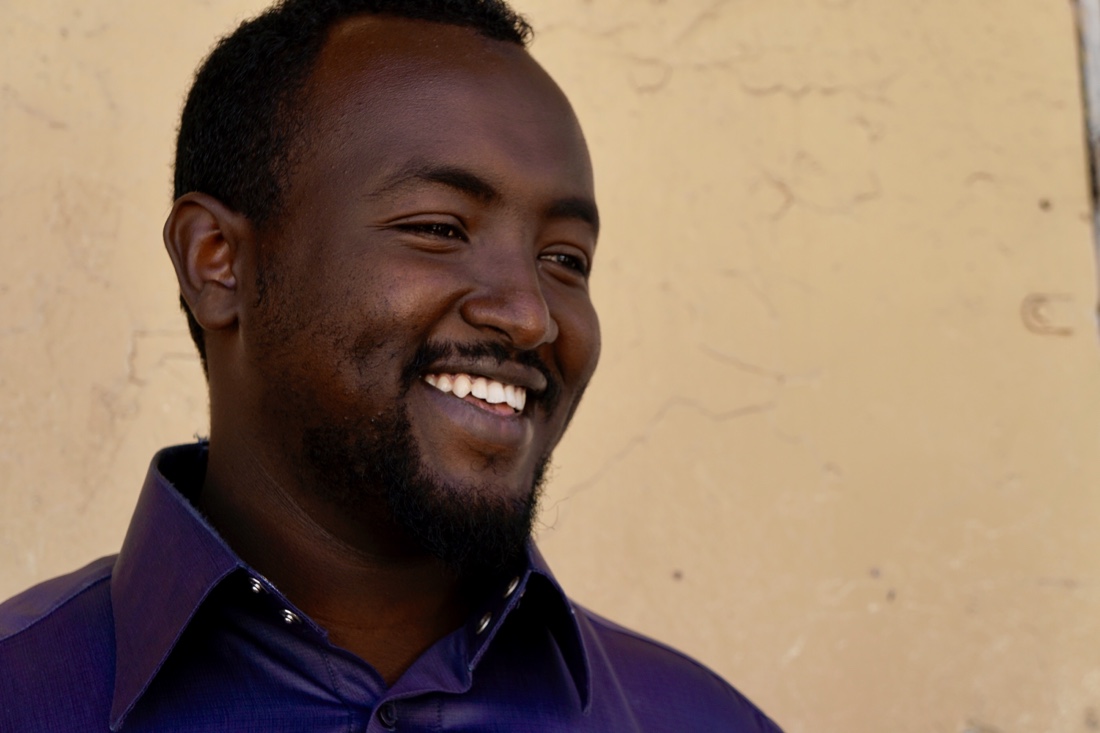 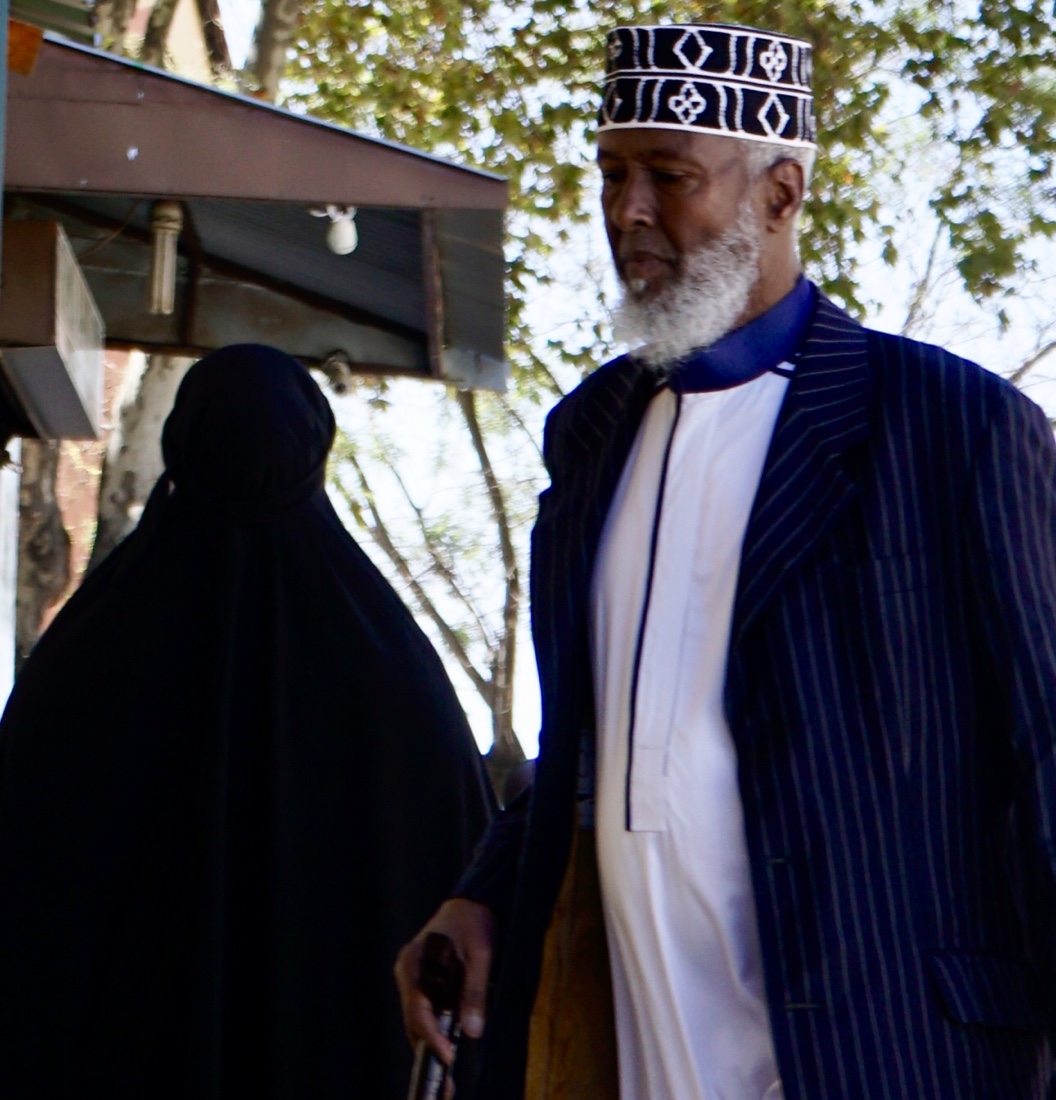 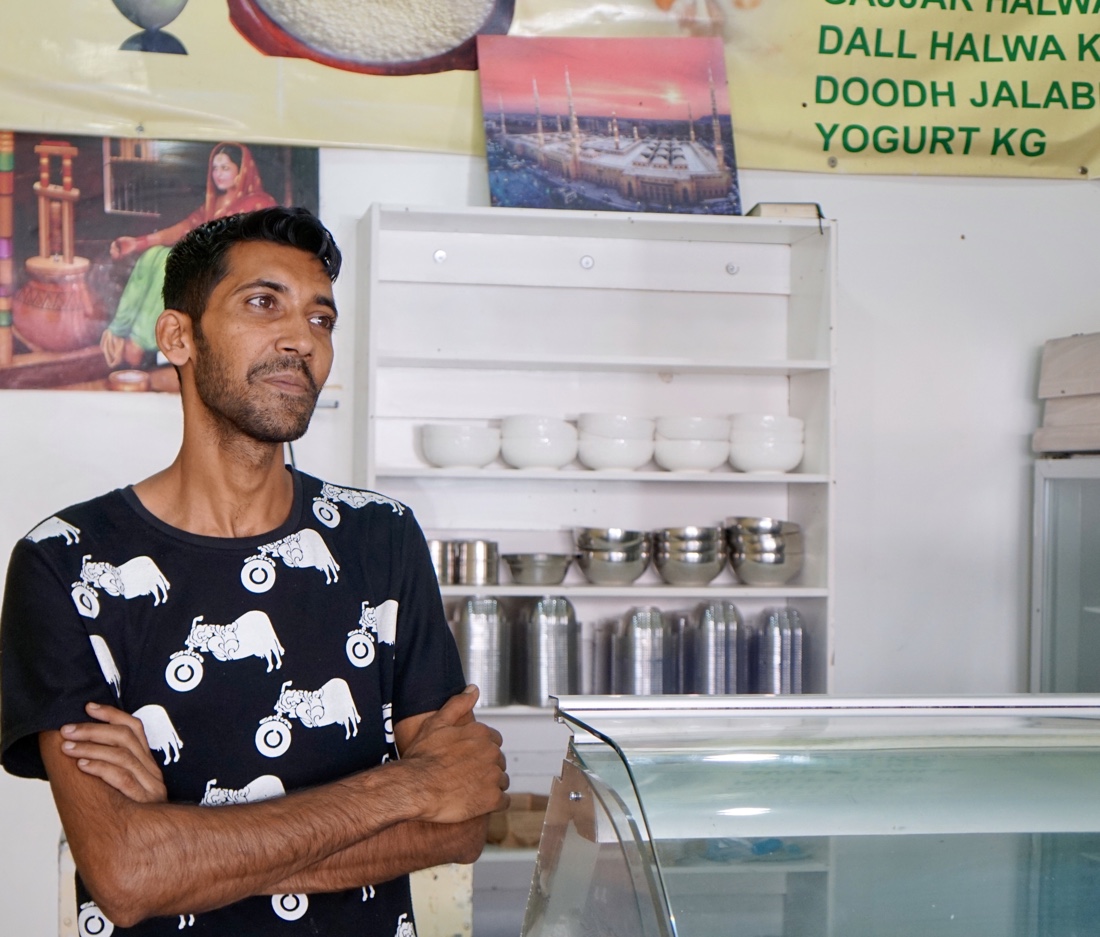   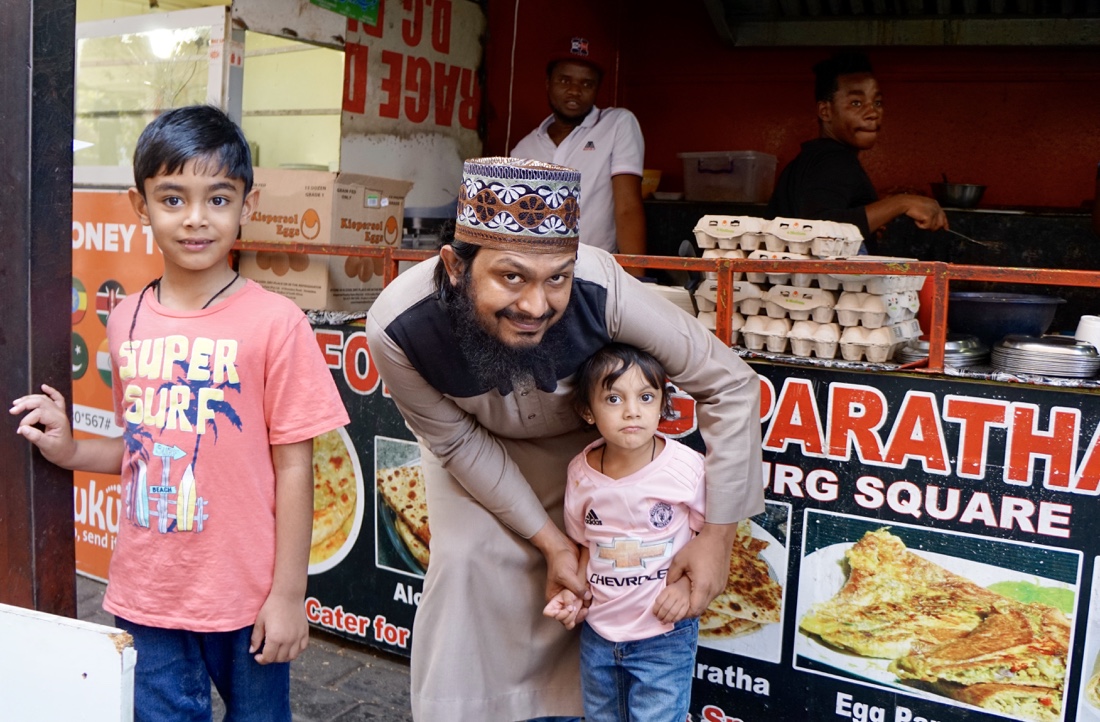 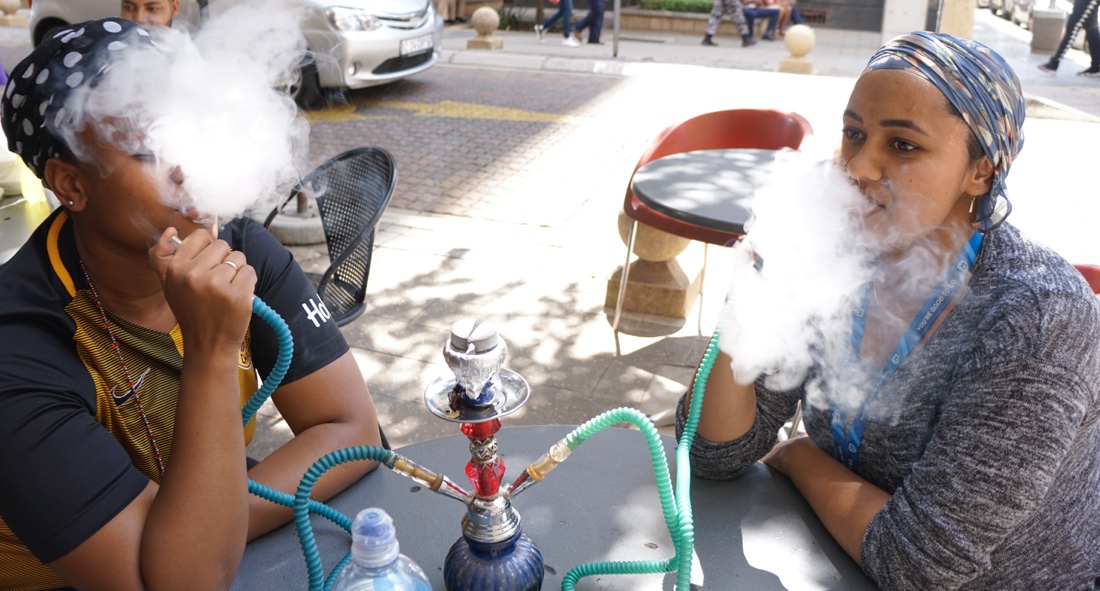 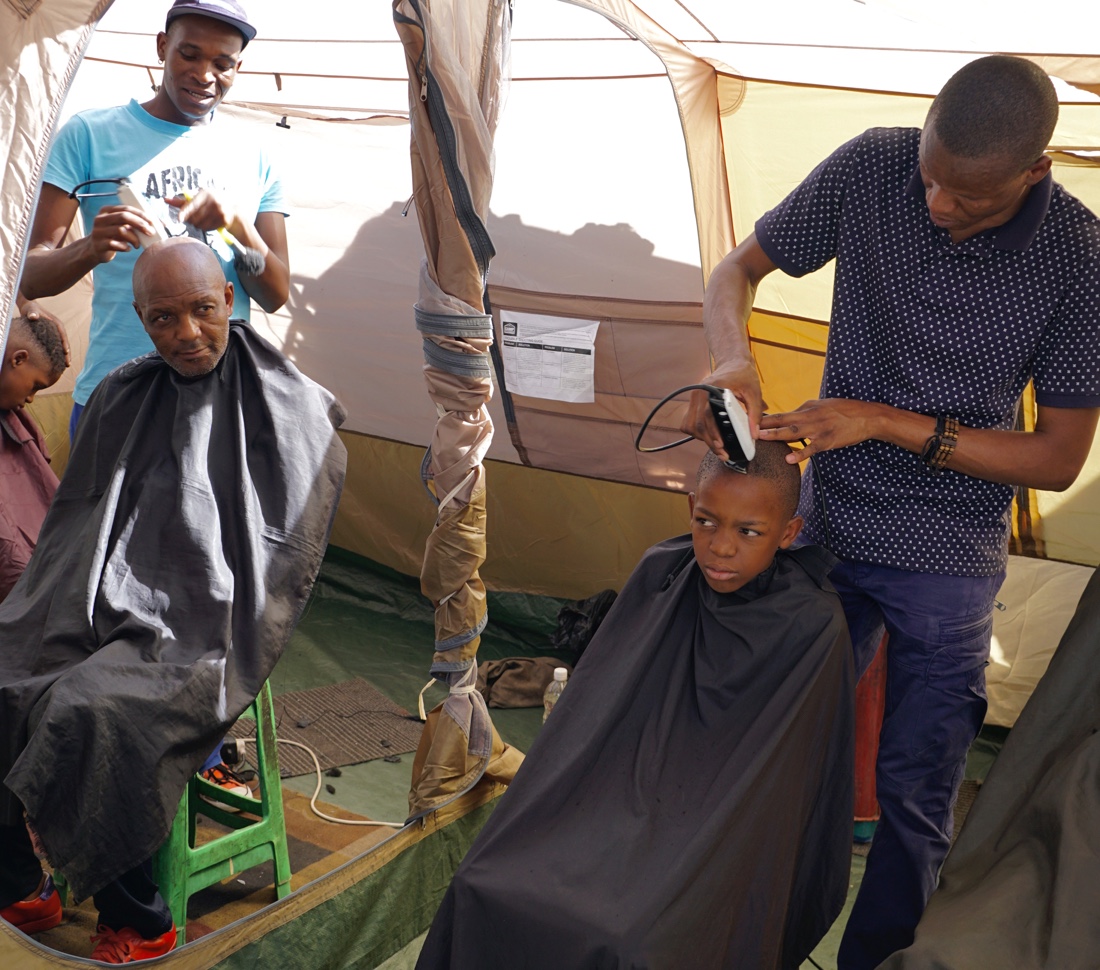 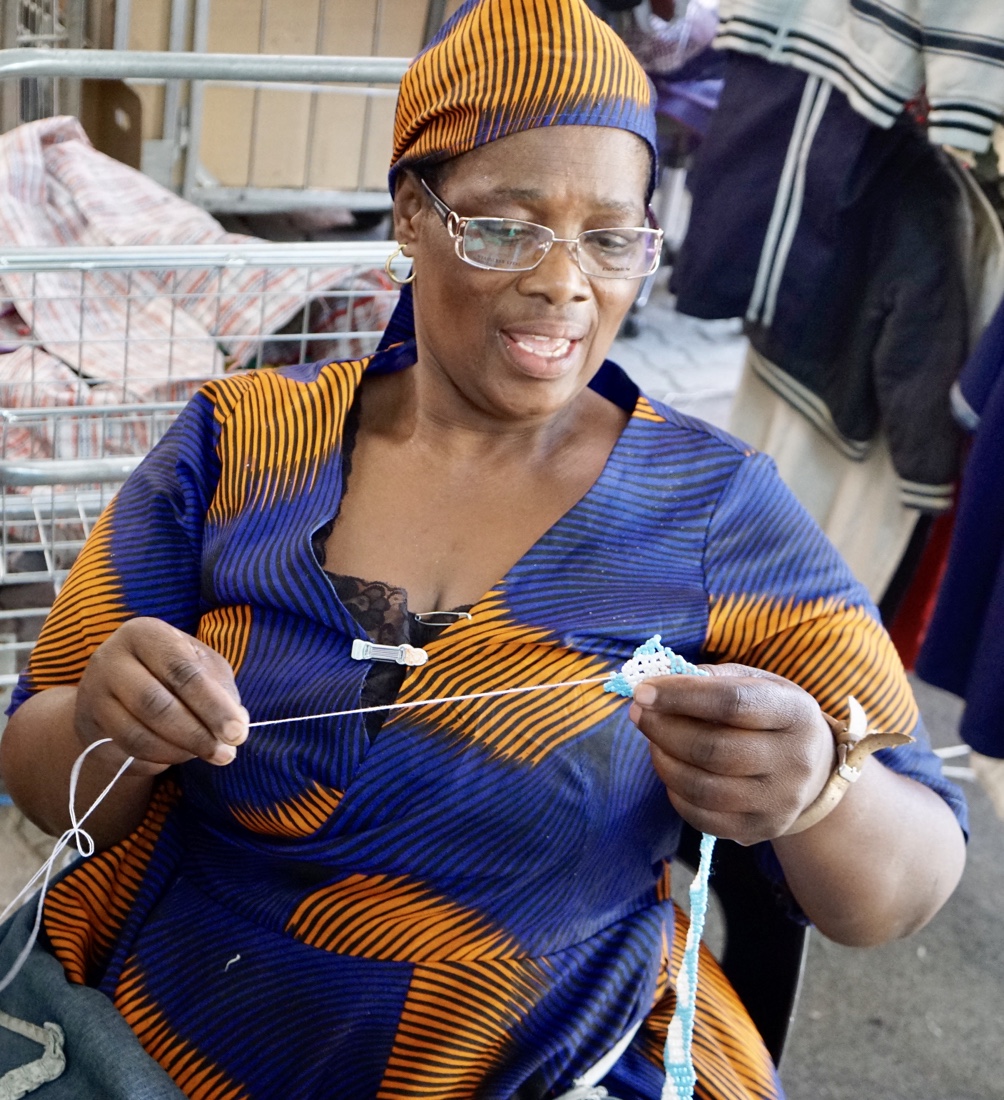 We walk around downtown Joburg, which looks much like any large city on a Friday afternoon. Though the city has a reputation of not being very safe, I would not have felt that way except that Freedom and Angus repeatedly warned me to guard and hang on tight to any valuables.We had lunch at a venerable old club, the Rand Cub, that was a power center, not open to women until a few years ago, in the days when gold ruled Joburg, in the late 19th and early 20th century. We walk around downtown Joburg, which looks much like any large city on a Friday afternoon. Though the city has a reputation of not being very safe, I would not have felt that way except that Freedom and Angus repeatedly warned me to guard and hang on tight to any valuables.We had lunch at a venerable old club, the Rand Cub, that was a power center, not open to women until a few years ago, in the days when gold ruled Joburg, in the late 19th and early 20th century.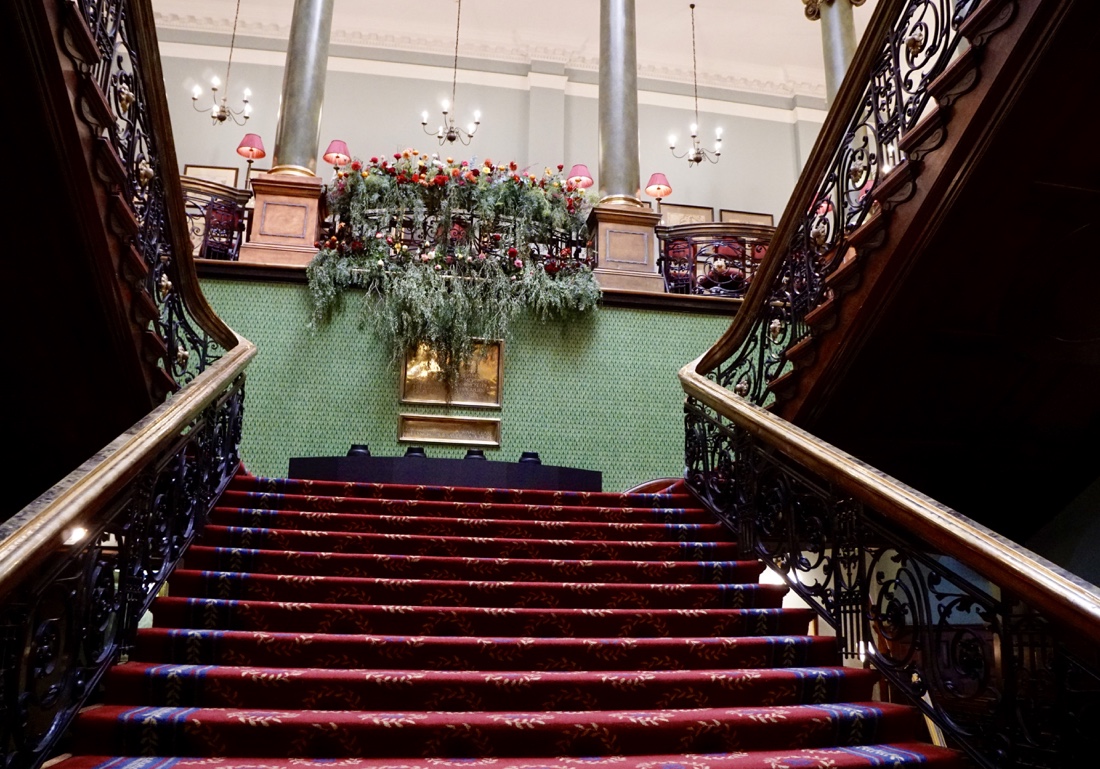 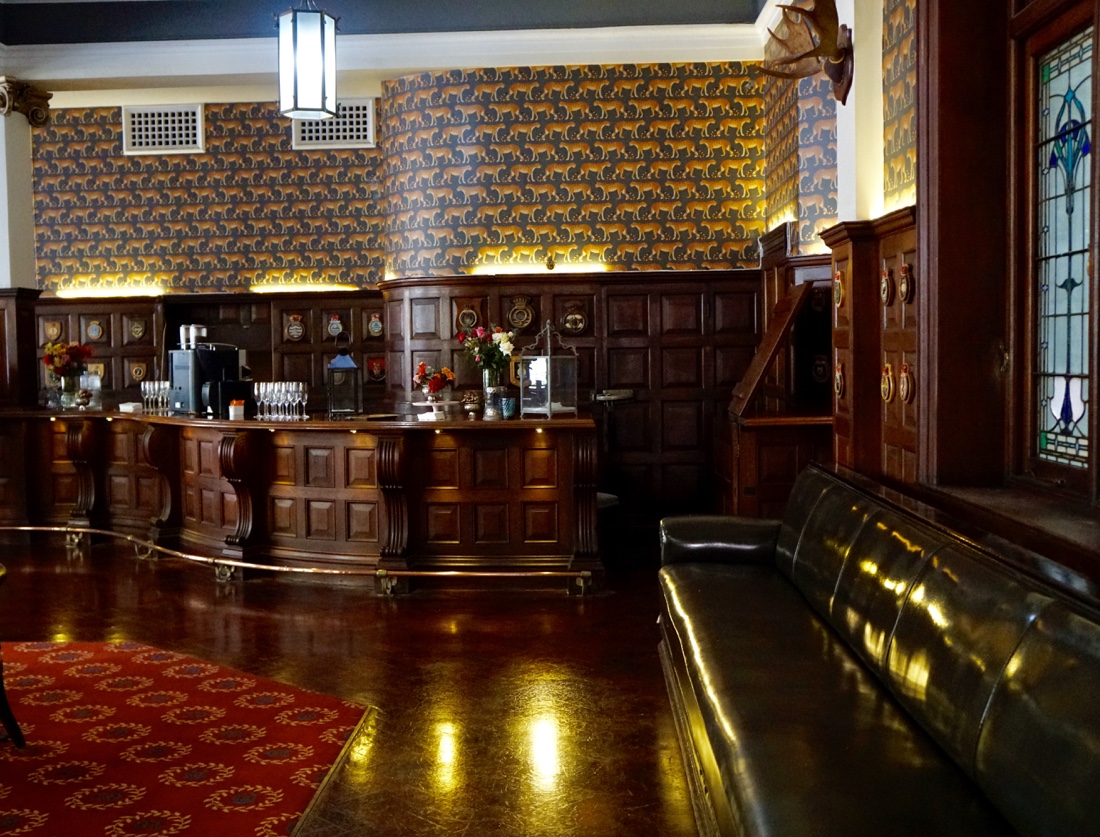
Here are photos of me with Angus and of Freedom.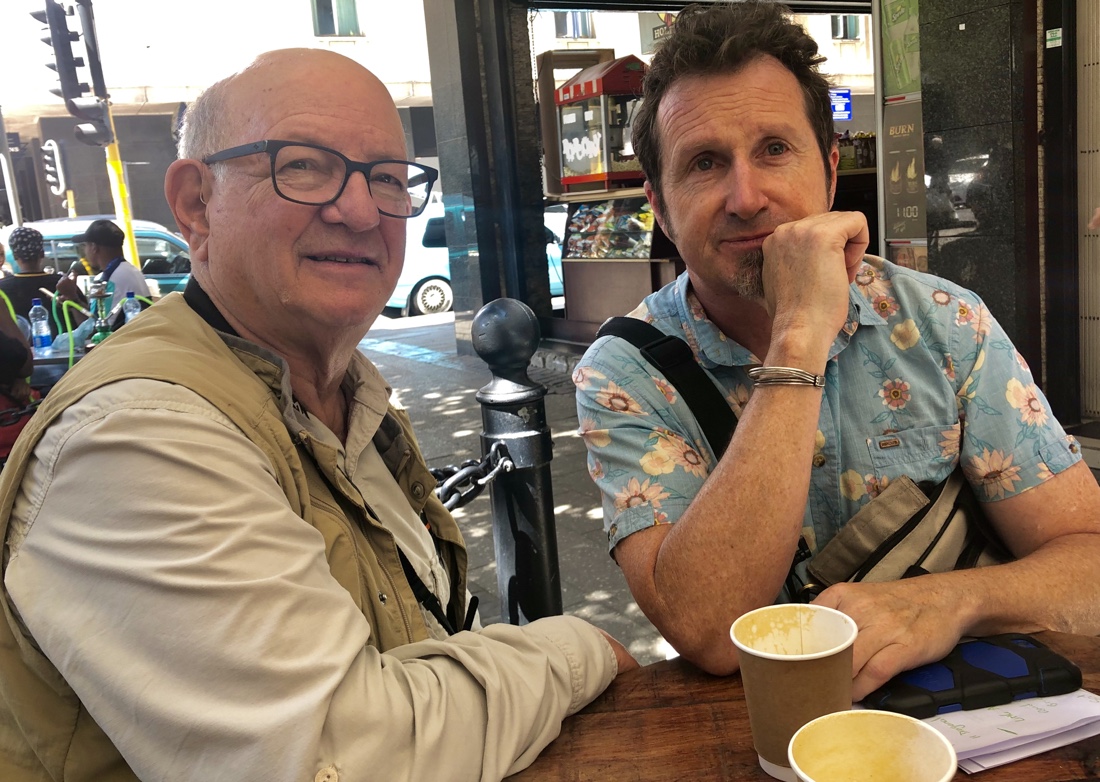 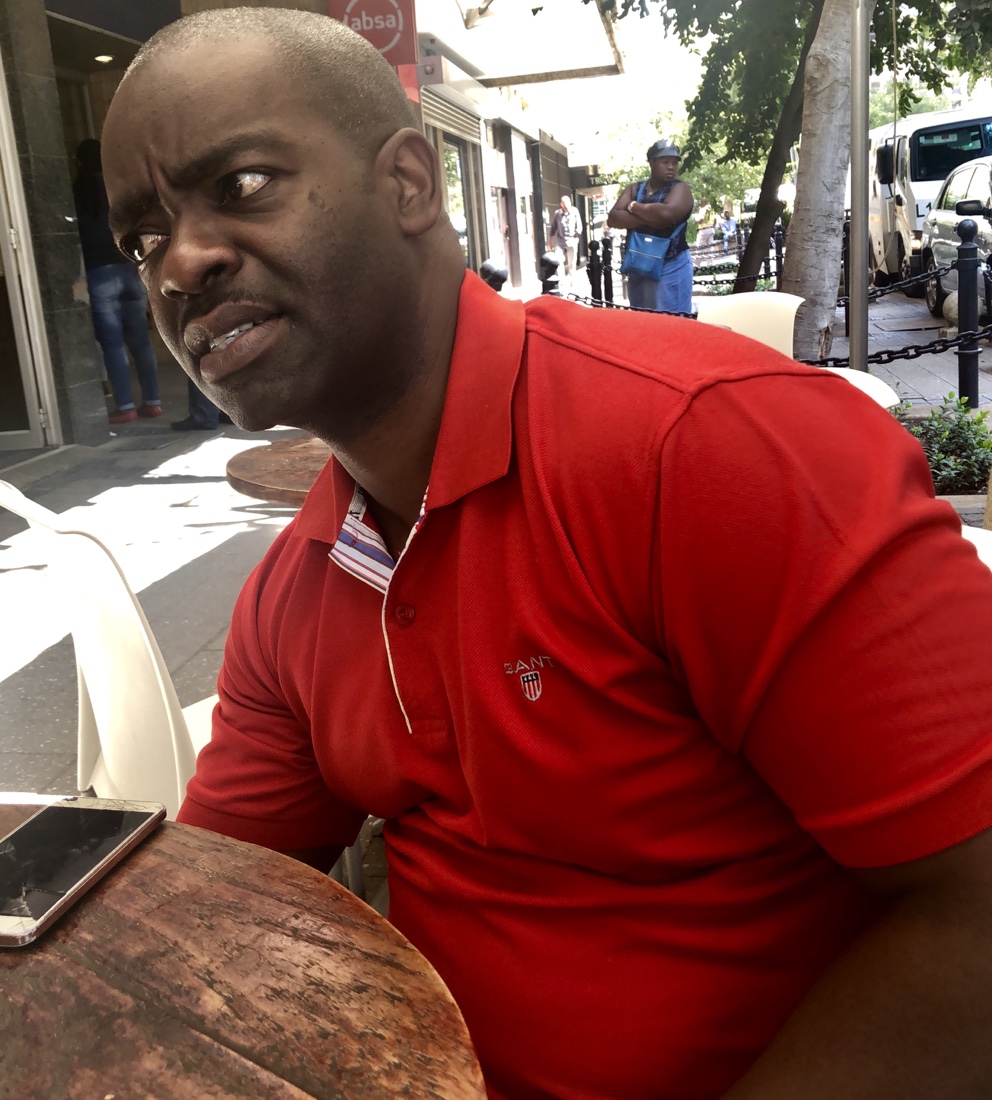
After lunch, we visited the fascinating and well-designed Origin of Man Centre at University of the Witwatersrand. We needed at least twice the hour and a half that we had to devote to the museum, but I am very glad that we visited it because I think it will give me an appreciation for some other things I will see on the photo trip that I will be embarking on Sunday.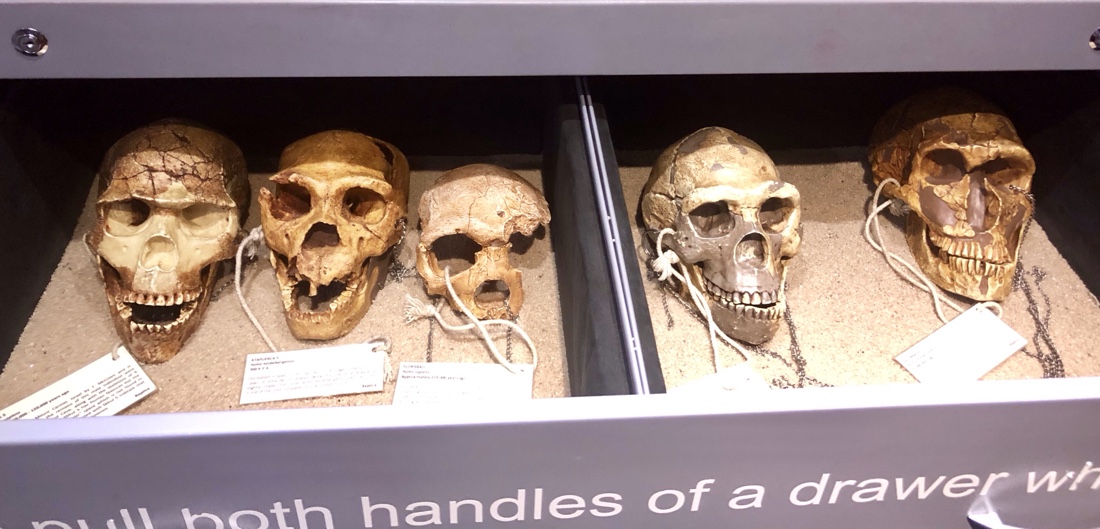
After the museum, I went back to the hotel to rest briefly. Freedom picks me up and drove me to the Oxford Synagogue, where I had been told that the eveningm the restaurant service would last 45 minutes. In fact, it lasted an hour and a quarter. Some 80 or more people attended in a room that looks like a social hall. The rabbi was from Israel and the Cantor played a guitar. Some of the melodies were familiar and others were not. People are very friendly and I’m glad to have gone. I was invited to stay afterwards for a meal at the synagogue, but I could not because my hotel had made a dinner reservation for me at Bellagio Restaurant. The restaurant and dinner were both first-rate.
I return to the hotel to finish blogging. Of course the way I got back to the hotel from the restaurant was by calling for an Uber. The world is getting very small and very similar.
March 27-28
Well, here I am, sitting on a plane, only about nineteen hours from landing in Joburg. I have a 2-hour flight to Atlanta, about a 2-hour layover there, and then a 15-hour flight to Joburg. So, whattayoudo?
Well, there’s certainly no rush. My current plan is the following:
Do a little blogging
Perhaps read a bit
Perhaps text a bit (Delta offers free texting, which may or may not be a blessing; we’ll see)
Then, en route to Joburg……
Perhaps eat a little
Perhaps look at photos from Morocco
Perhaps look at one or more movies
Try to sleep (I’m generally not successful, but I’m gonna try an Ambien)
So, there’s a lot of “perhaps,” which I think is just fine.
A few further reflections on Morocco. In the eight days we’ve been back, we’ve been asked by many friends how our Morocco trip was. Our general answer, “very good, but not one of the top few we’ve taken,” is accurate, but not really fair. Not every trip we take can be one of the top few. Fact is that Morocco was damn good by any reasonable measure. We saw many interesting things, experienced some street life and probably had the best accommodations, overall, of any trip we’ve taken.
Though I need to spend a lot more time on photos, the time I’ve spent already indicates that I’ve got enough decent shots to satisfy me. Maybe I’ll wind up with twenty, give or take, that are worthwhile. Here’s are three that I like. 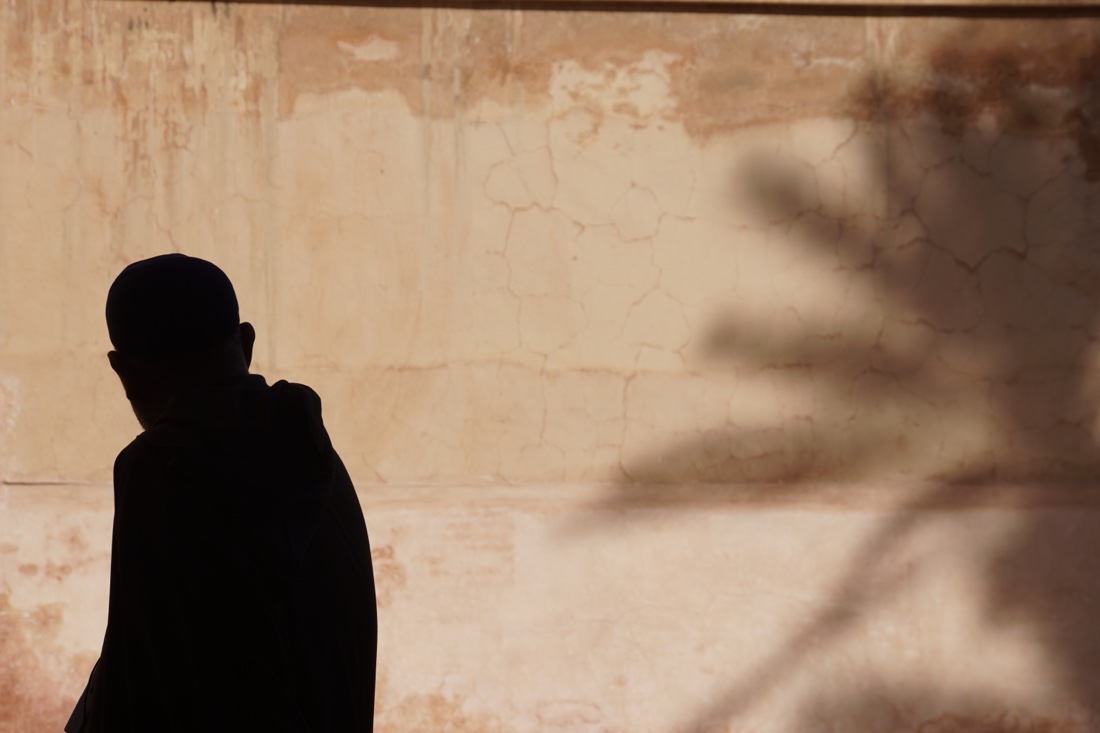 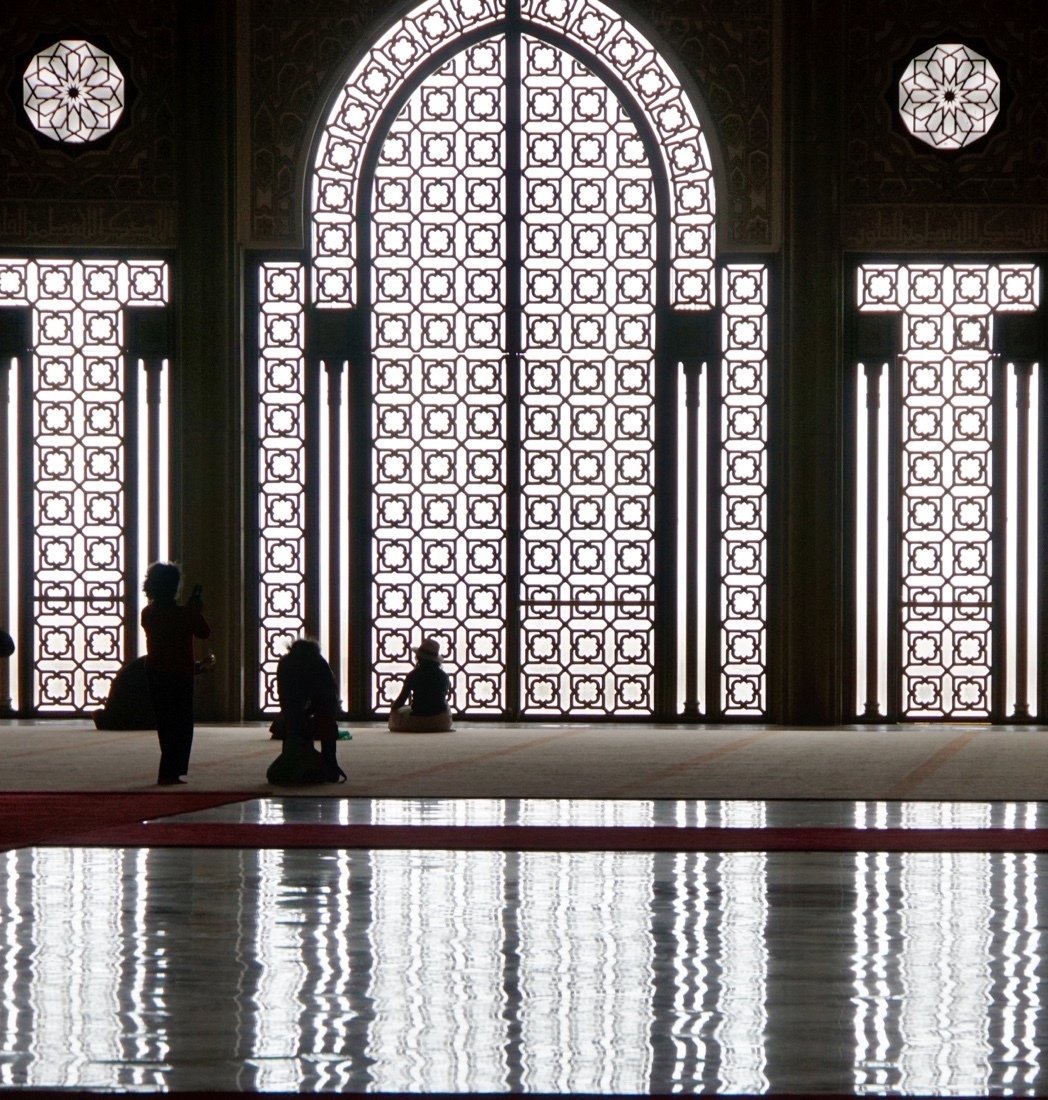 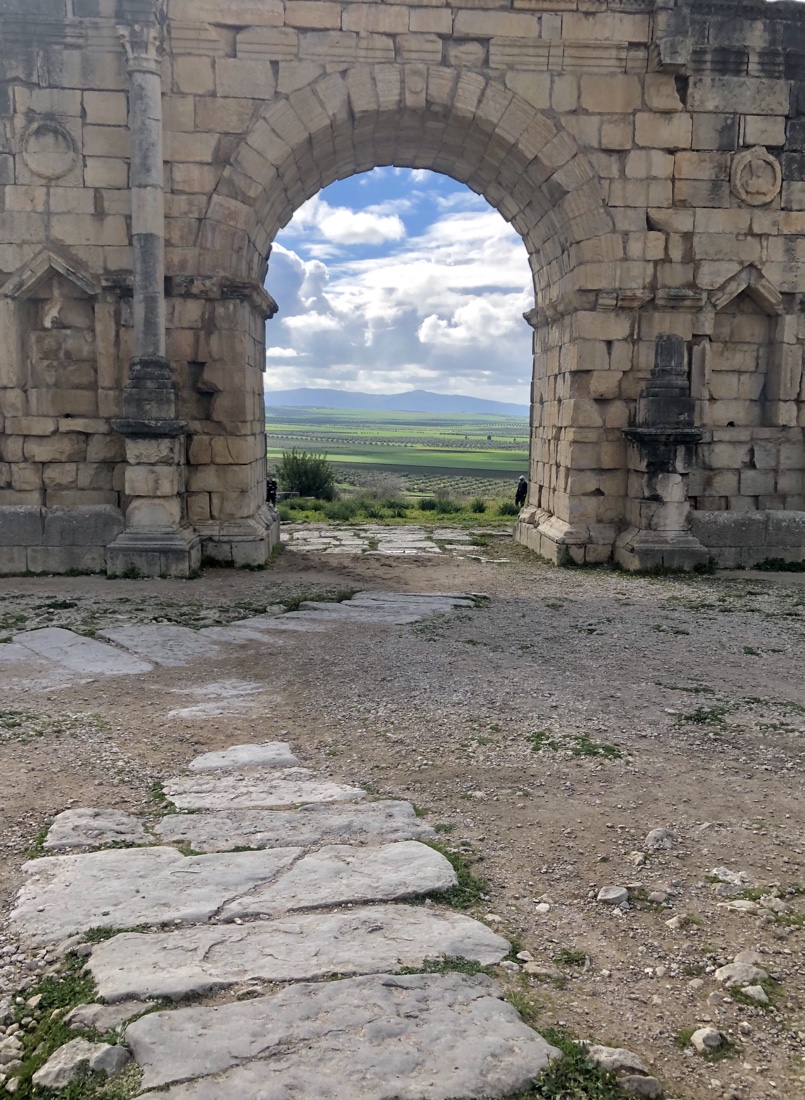 I did not take many photos, compared to what I might usually take on a trip of that length, probably 800-900. I look forward to spending a lot more time with these photos after this trip. I expect that I’ll take many more photos on this trip, since it is, specifically, a photo trip. I did not take many photos, compared to what I might usually take on a trip of that length, probably 800-900. I look forward to spending a lot more time with these photos after this trip. I expect that I’ll take many more photos on this trip, since it is, specifically, a photo trip.
So, I’ve learned a few things since Morocco, from a Japanese poet, artist and peace activist and from a Lyft driver from Mexico City.
Recently, Carol and I read “Painting Peace” by Kazuaki Tanahashi. It’s quite an interesting book, dealing with his fifty years of active engagement in International peace movements, his schooling in aikido and in Buddhism, his poetry, his translation of Dogen poetry and his approach to painting. As a long-time lazy person, I love his take on laziness, “It’s a tough job to be lazy, but somebody has to do it. Industrious people build industry. Lazy people build civilization.” He says that laziness does not mean doing nothing but doing less. It can also mean being effective, as in, “I’m too lazy to be ineffective.” And, in Dogen, Tanahashi says, every encounter we have is a miracle. Nice.
My Lyft driver on the way to the airport today, on hearing that I was going on a photography trip, said, “I love photography. When you take a picture it no longer lives just in your mind. You can look at it and think about it. It’s like capturing time.” I love the concept of photography as “capturing time”. I suppose that it also allows us to relive moments of our lives, and to share them with others.
My Lyft driver was from Mexico City. Still is, actually. He comes here to earn money and every two months goes back home to be with his wife and two children for a couple weeks. The type of person our president wants to protect us from.
So, less than four hours from Joburg now, I can report that I did a little bit of most of what I thought perhaps I’d do. For the most part, not worth expounding on, with one exception. Flipping quickly through over 9000 photos I have on my iPad was pleasurable, recalling prior trips we’d taken and seeing photos of the grandchildren in various stages of their growing up (funny how there are many pictures of the grandkids and almost none of their parents).
But there was one photo, in particular, that I was looking for that I thought might be there, and I found it. 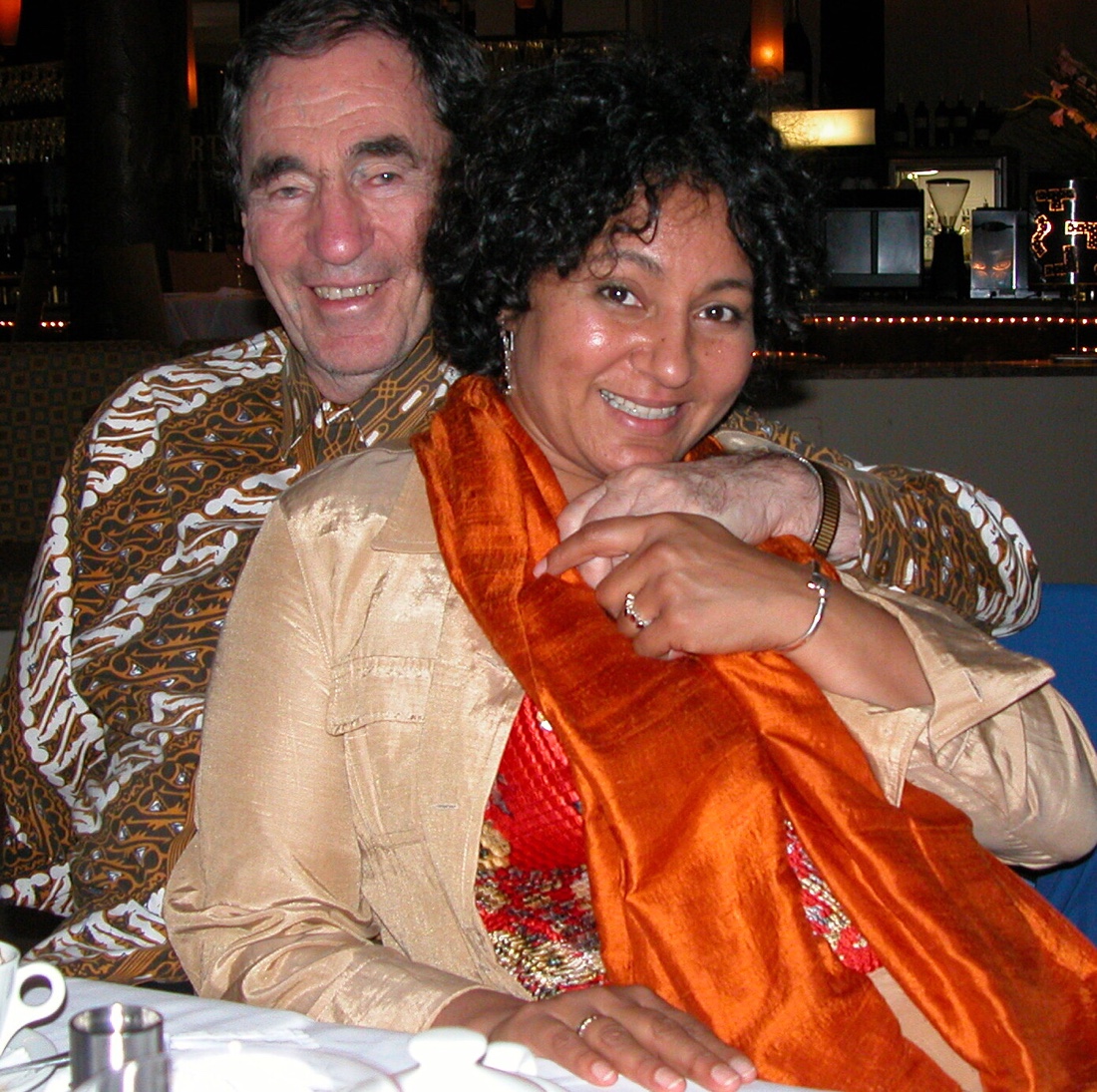 This photo, of Albie Sachs and his partner, Vanessa, was taken 16 years ago in Capetown, on a trip we took with our friends, Judd and Linda Miner and Bob Bennett and Harriet Trop. This was Carol and my first trip to Africa, and may well still be our favorite trip, ever. This photo, of Albie Sachs and his partner, Vanessa, was taken 16 years ago in Capetown, on a trip we took with our friends, Judd and Linda Miner and Bob Bennett and Harriet Trop. This was Carol and my first trip to Africa, and may well still be our favorite trip, ever.
I think it was Bob who had a connection to Albie, a prominent activist in the anti-Apartheid movement, who lost his right arm in a car bomb explosion. Undaunted, Albie continued his activism and became a member of the Constitutional Court in South Africa. Vanessa is a practicing architect. We spent a delightful evening, drinks at Albie and Vanessa’s home and dinner out, one of the most memorable experiences of a very memorable trip.
Thirteen years later, when we took our granddaughter, Zoe, to South Africa, Albie hosted us for tea at his home and invited us to an art opening of paintings by the wife of the Spanish ambassador to South Africa at which Albie was giving some remarks. Vanessa joined us at the opening and at the small dinner afterwards to celebrate the opening to which Carol, Zoe and I were invited. As we entered the restaurant, Vanessa whispered to Zoe, asking her whether she would mind if Vanessa sat next to her at the dinner. How sweet is that!
In his eighties, Albie had not missed a step, flying all around the world to consult on peace issues. He had recently been to Colombia and the day after our dinner was flying off to deliver a major address in Toronto and then to meet with some professors at Harvard Law School. Unfortunately, I won’t be seeing Albie on this trip. But I’m thinking about him, and Vanessa.
Upon arrival in Johannesburg, I am met at the door of the aircraft with my name on a paging board and assisted through immigration, baggage collection and customs. These special services really help on long trips like this. I am then shown to the Arrivals Hall to meet my driver, Freedom Dube, who has driven for me twice before on trips to Joburg.
Johannesburg is Africa’s commercial and industrial powerhouse, as well as the heart of the political struggle against apartheid. No more than 2 hours flight from Cape Town, Windhoek, the Okavango Delta, Victoria Falls, the Kruger National Park and the Mozambique islands, it is an ideal springboard into the rest of the sub continent. Affectionately known as Jo’burg (or Jozi or e’Goli – City of Gold) it is the largest city in South Africa, and surprisingly also one of the greenest – more than 6 million trees have been planted here in what was originally flat grassland veld. Jo’burg’s origins are firmly ensconced in the mining industry, with particular reference to the discovery of gold in 1886, which saw an unprecedented gold rush and the city literally burgeoning overnight.
Jo’burg boasts a colourful and multi-cultural mix of people with an energy that gives it the moniker the ‘New York of Africa’ and is currently undergoing large scale rejuvenation and renovation, particularly within downtown Jo’burg, where the Newtown precinct has received an injection of cash and creativity. Here, the emphasis is on arts and culture, theatre, dance, music, crafts, restaurants and bars and is easily accessible by the Nelson Mandela Bridge, which is itself worth a visit. I’ll be going to this area tomorrow.
Freedom drives me to The Parkwood, a boutique hotel highly recommended by my travel against. It seems cozy and comfy, and hopefully will afford a good night’s rest. Dinner at he hotel was, surprisingly, absolutely delicious. It may turn out to be the best meal i have in SA. I’m hoping not, because that would mean that I’m in for one or more terrific meals.
March 26
Well, tomorrow I head to South Africa.
Yes, I know I just got back from Morocco a week ago, so it may seem a bit strange to be heading back to Africa, but here’s how it happened. My trip to South Africa is with a small photo group, and I’d booked that trip, along with air reservations, before Carol and i decided to go to Morocco.
When we decided on Morocco, I looked into going straight from there to South Africa, but found two obstacles. First, the run from Morocco to South Africa is not exactly a commuter run. It’s far, not well traversed and would have required about thirteen hours of flights, through Dubai or Europe. Second, changing my existing flights from the US to Joburg (Johannesburg) would have been difficult and expensive. So, I decided to fly back to the US for eight days and keep my original flights to SA. I think that was the right decision.
The trip I’m taking is being led by Nevada Wier, a world class photographer with whom I’ve traveled four previous times—to SW China, to Cuba, to Namibia and to Colombia. https://www.nevadawier.com/ There will be seven of us, plus Nevada and guides. Here’s a photo from one of my two prior trips to SA.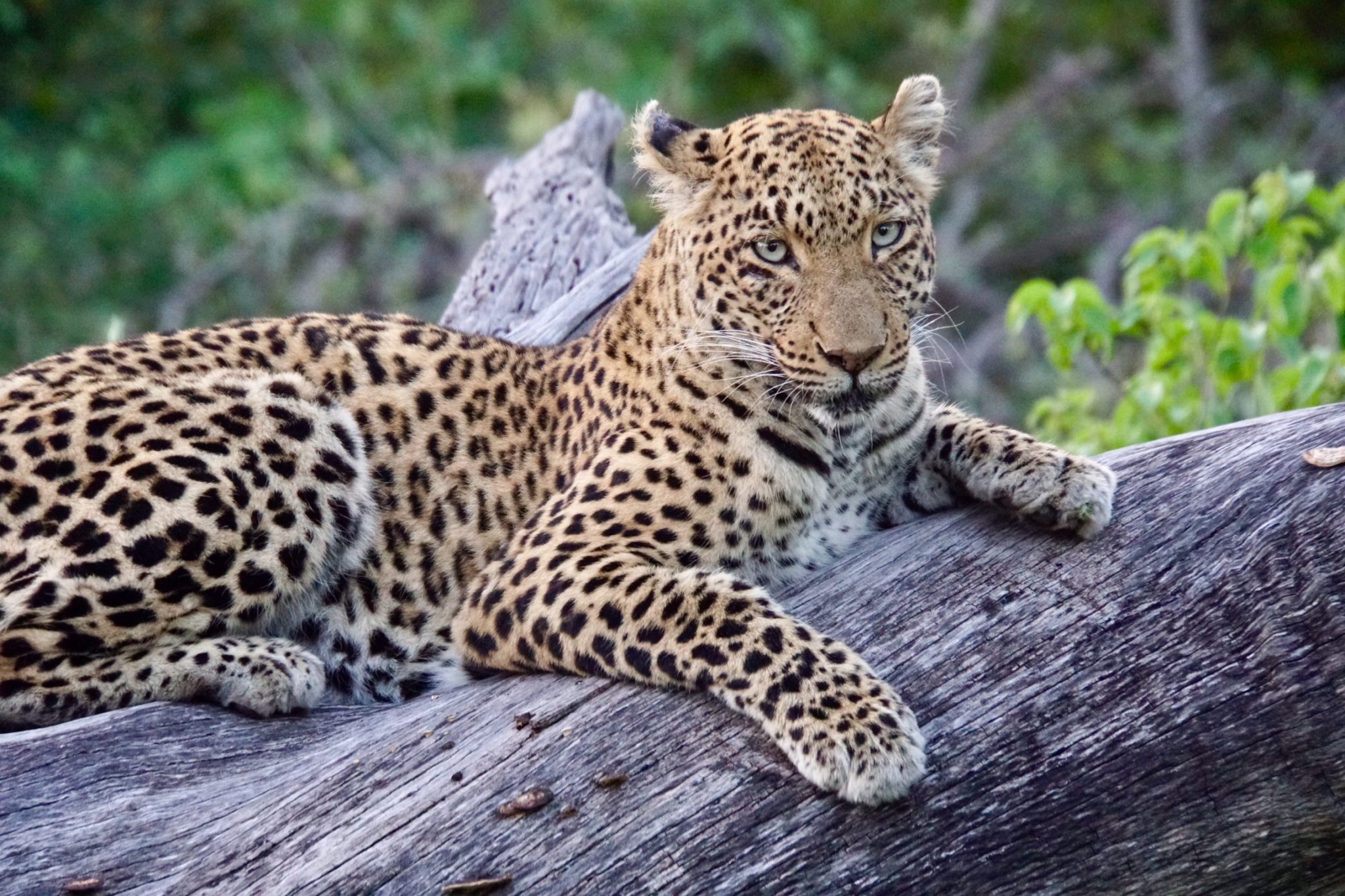 You’ll see nothing like that on this trip, because, having done a half dozen or so safaris, I’m not doing the safari extension to this trip. I’m going to see people. You’ll see nothing like that on this trip, because, having done a half dozen or so safaris, I’m not doing the safari extension to this trip. I’m going to see people.
And a good part of this will be in Lesotho, not SA. You’ll learn more about Lesotho, if you follow the blog.
So, get ready for the long flight to Joburg. It’s rather daunting, especially if you’ve never done it before. But it’s a helluva lot easier than swimming.
March 19
Shuttle to the airport, then ride modern airport transit train to our terminal,
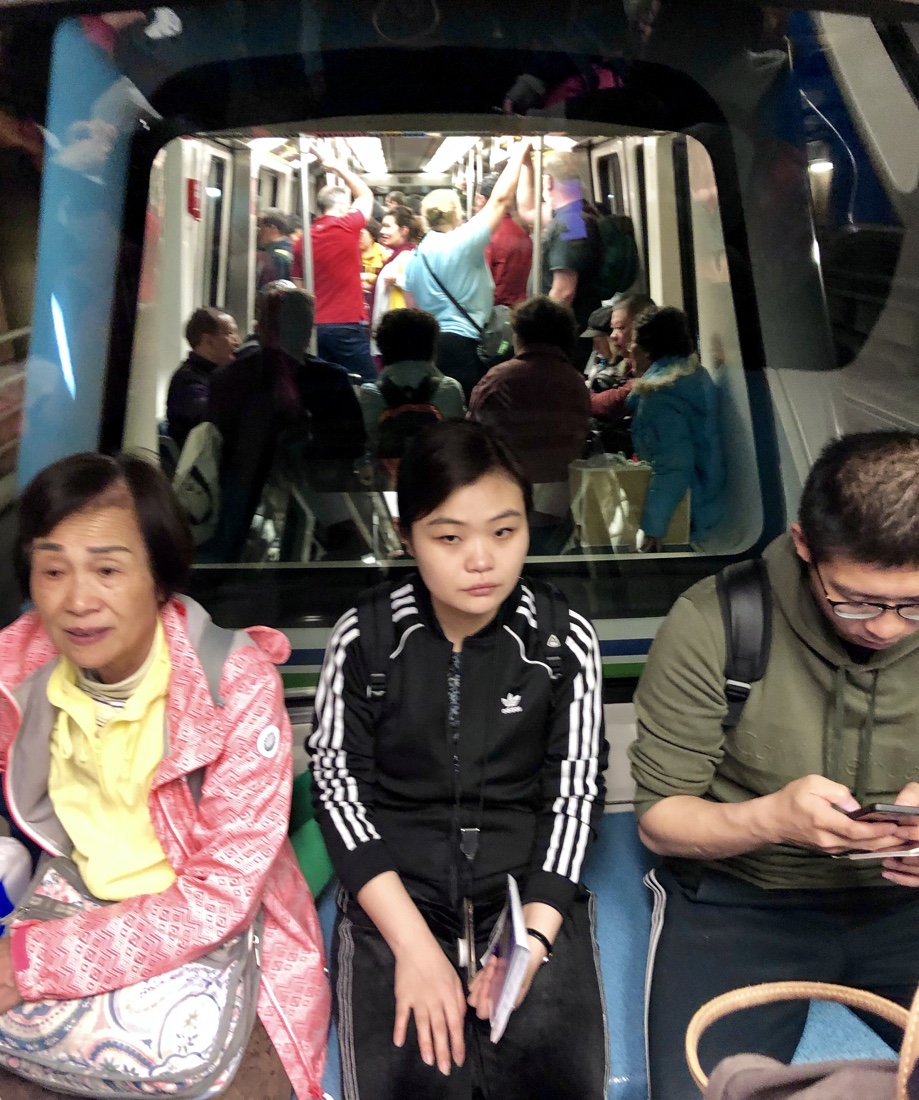 where we have a couple hours to breakfast and hang out in the VIP Lounge before our non-stop 9-hour flight home. For those of you who recall the opening posts of this trip in which photos of our luggage 51 years ago and on this trip were included, here’s a photo of the entire luggage Carol and I are toting right now. where we have a couple hours to breakfast and hang out in the VIP Lounge before our non-stop 9-hour flight home. For those of you who recall the opening posts of this trip in which photos of our luggage 51 years ago and on this trip were included, here’s a photo of the entire luggage Carol and I are toting right now.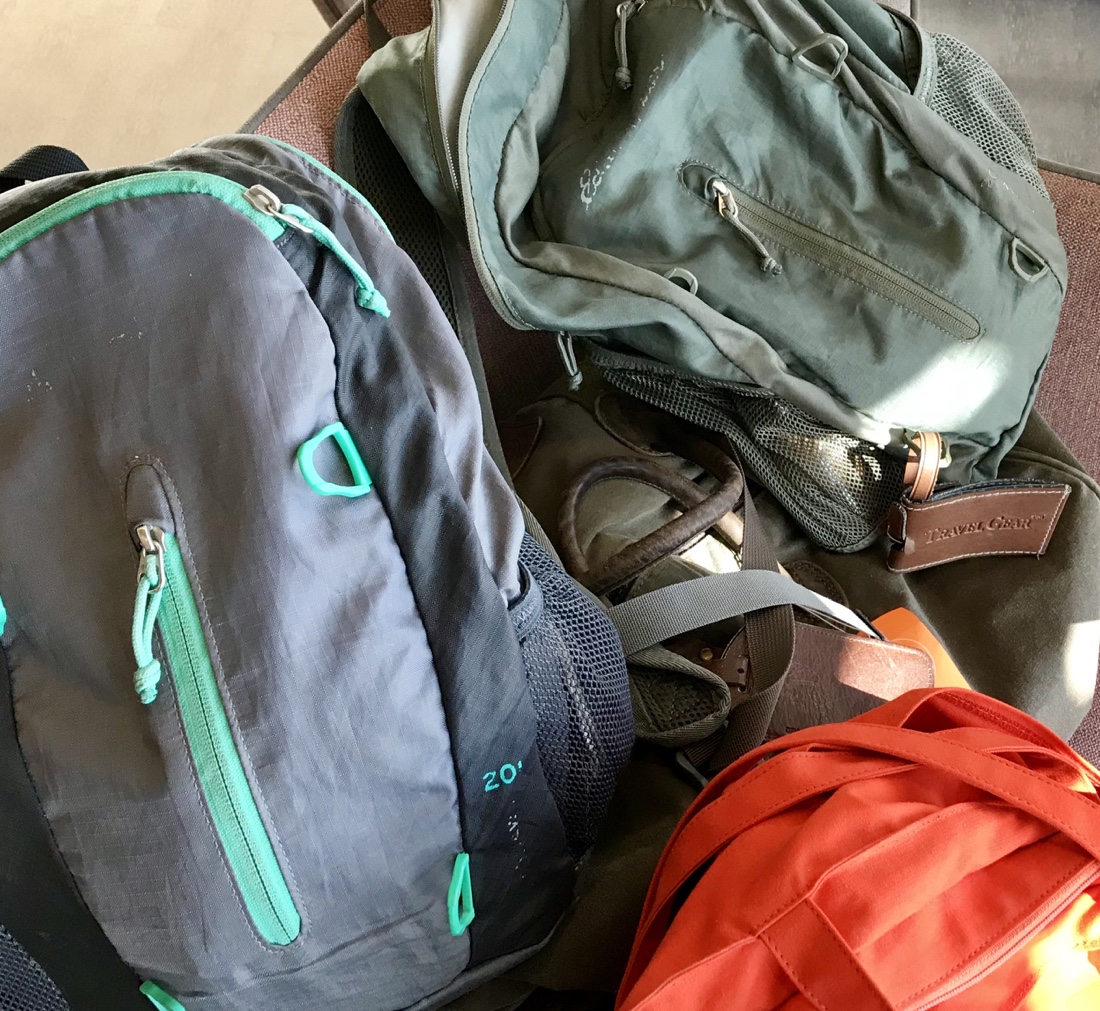
So, when we planned this trip, I thought it would be interesting to compare our experience on this trip with our recollections of the trip we took fifty-one years ago. Of course, there are major differences in the way we traveled, hitch hiking, level of hotels, shopping, etc. That’s why you can go back to places you’ve been and experience them differently. There’s a bittersweet element to that, because it reminds you that you’re no longer the kid you think of yourself as. Of course other things remind you of that, as well. Climbing stairs, hiking and getting up from a chair are a few that pop readily to mind.
Truth is that it’s difficult to compare experiences, though, because I have virtually no recollection of those experiences back in 1968, except for Marrakech, which I recall as far and away the most exotic place we’d ever been. The markets, the snake charmers, it all felt like another world, authentic, but strange. Today, Marrakech feels much more touristy and contrived, more like a carnival. Certainly there were things we saw on this trip, places we went, that we had not seen before that were quite interesting and the main market area is still a spectacle, but, if I’m honest, the market area itself was disappointing. I guess you can’t go home again.
The Médina in Fes, by contrast, felt much more authentic, and I liked it much better. Our guide said that Fes has been discovered and is becoming more like Marrakech. In ten years, a visit to Fes may seem more like a visit to Marrakech today. Sad. But it’s one of the challenges you face, if you’re trying to travel to see things that expand your experience and give you a sense of a different time. That’s getting harder and harder to do. The image that sticks in my mind here is the beautiful new train station in Marrakech whose architecture blends the old and the new, in which a large McDonald’s is featured on the ground floor, clearly visible from the outside. I guess that there’s nothing inherently wrong with this, but it bothers me that this is the face we present to the world in the same way (but not as much) as Trump representing us to the world as the best we’ve got to offer. I never had this problem when we used to travel the world and see huge poster boards of Michael Jordan slam dunking.
My overall impression of Morocco is of a comfortable, rather prosperous and stabile country. There is some begging, but not a large amount, perhaps not more than in our country, and beggars are not aggressive. The infrastructure seems solid, especially very good roads throughout.
Morocco seems less “different” than many places we’ve traveled. Of course, the language is different and French, rather than English, is the second language, but it’s easy to navigate in English. People are friendly, and we had no sense of danger anyplace we went. Dress is different, though, especially among younger generations, Western dress is common. The King appears to be universally revered, which could not be farther from what we left behind. People seem to feel that the country is headed in the right direction. I’m ready to trade leaders, anytime.
It’s always good advice to watch where you are going. Morocco has taken this to a whole different level, though, with steps small and large everywhere, inside and outside, almost as if they’ve booby trapped the entire country. I think that travelers should be warned strongly, probably a couple times, about this danger. It’s natural to want to look around, but if you’re going to do that, stop first. Or you’ll wind up on your head or, if you’re fortunate, on your ass.
One way to assess a trip is to break it down into its elements, and here our trip fares very well indeed. Our accommodations were generally excellent, and two of them, Dar Ahlam and Kasbah Tamadot, were truly outstanding. Interestingly, Carol and I had different views of which of the two was most outstanding. I’ll present her view, too, but not as convincingly, both because it’s misguided, and because it’s my damn blog. Let’s stipulate, and Carol would agree, that both of these places were special.
Carol preferred Kasbah Tamadot, which was elegant and luxurious in a more conventional way. She loved the view of the mountains surrounding the Kasbah. I preferred Dar Ahlam, because it created a unique experience in which you almost felt as if you were the only guests, being served meals alone in different areas in and outside of the residence area. Service was outstanding. Carol felt that the Dar Ahlam experience was a bit contrived. Maybe so, but I can definitely live with this kind of contrivance.
Our other accommodations were also generally excellent, especially in Casablanca and Marrakech. The service at our very nice riad in Fes, though, was decidedly subpar.
The food throughout was very good and sometimes excellent. We’re not real foodies, so I don’t keep track very well, but the restaurant in Casablanca the first night, Le Cabestan, was particularly good.
Guides and drivers were all very good, and reliable. Of course, this element is very important.
The overall plan for the trip was excellent. To the limited extent one can “do Morocco” in two weeks, we pretty much did it. High Atlas Mountains, the desert, visits to Fes and Marrakech and stops in Casablanca, Rabat and Chefchaouen. Two internal flights were a good idea to save time, fast track service at airports was definitely worthwhile and the vehicles we traveled in were excellent.
We saw some very good sights, the kind you “should see” as a tourist—for example, the Hassan II Mosque, Roman ruins of Volubilis, Bahia Palace In Marrakech and the Saadian Tombs. The more personal elements of the itinerary—the tasting tour, beauty tour and photo tour in Fes and the visit to The Voice Gallery were all very worthwhile.
And even better were the unexpected connections—the synagogue service in Fes, lunch with Rick Gaynor in Rabat (it was a special, unexpected pleasure to discover that one of Rick’s prior assignments, through the agency he worked for, had been to provide funding to foster pineapple farming in Ghana and to be able to connect him with our Ghanaian pineapple farmer friend, Daniel Kwarteng), tea with two young women from the travel industry, discovering a guide at the Roman ruins who had been in a life-changing film directed by Franco Zeffirelli at age fourteen, dinner with our friends, the Flannerys, in Marrakech and being invited in for tea on our walk through the almond grove. Maybe best of all was just wandering the streets, seeing people live their lives.
As usual, a few things did not go so well—the surprise hammam from hell, my falling in the mud on the almond walk and our trip to the desert. Though the desert stay had its moments, if we had it all to do over again, we’d have remained at Dar Ahlam. Basically, it’s eleven hours of driving for a couple of meals and sleeping in the desert, amid the dunes. Having been to Namibia and seen the dunes there, these dunes do not even remotely compare in grandeur.
In short, overall, this was another wonderful trip that reminded us again of how privileged we are to be able to do this, especially in the way we are able to travel comfortably, on our own, with drivers and guides, modifying our trail as we go.
It’s good to be back home, albeit temporarily.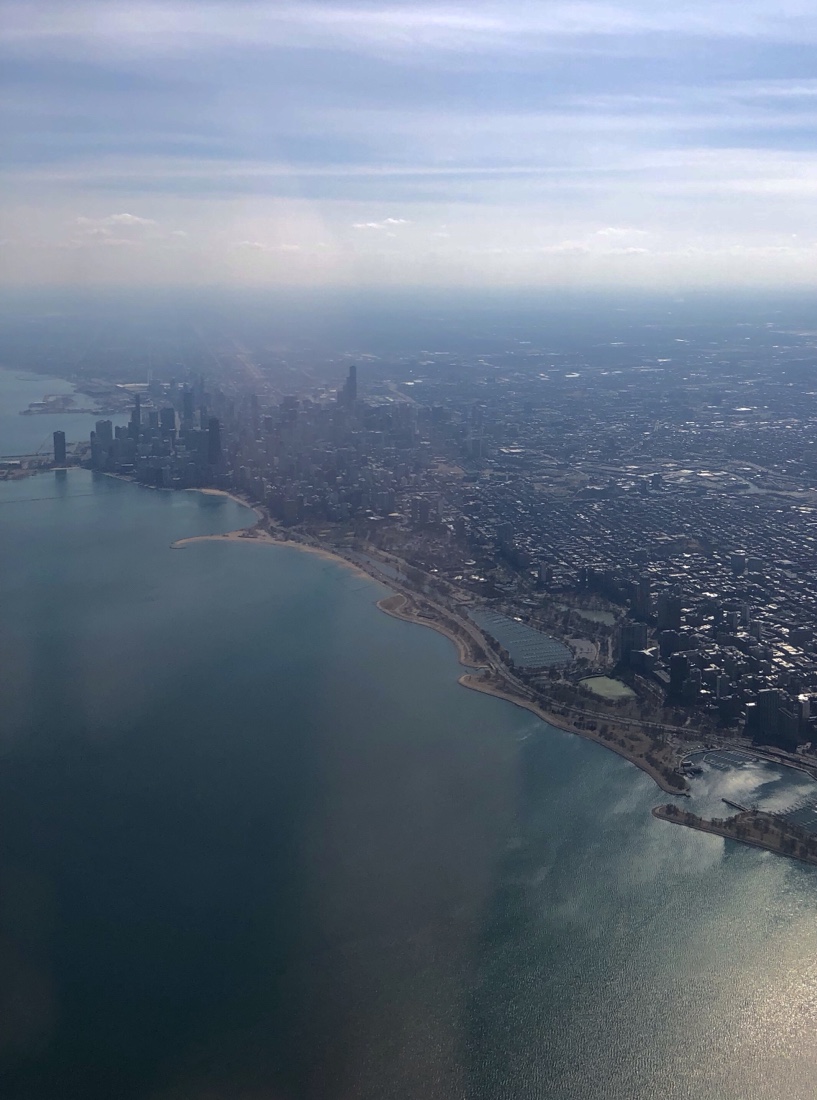
Thanks for following, and for all of your comments, which help to make all of this blogging stuff worth it. For those of you who follow each trip, better rest up. We take off again on March 27. No, I won’t tell you; it’ll be a surprise as to where.
March 18
Note: because I failed to put a title on yesterday’s blog post, you may have had difficulty finding it. Here’s a link in case you’d like to read it now https://dualartspress.com/6775-2.
Having packed yesterday, we have a relaxing morning after breakfast at the hotel. Carol reads on our balcony; I sit out by the pool.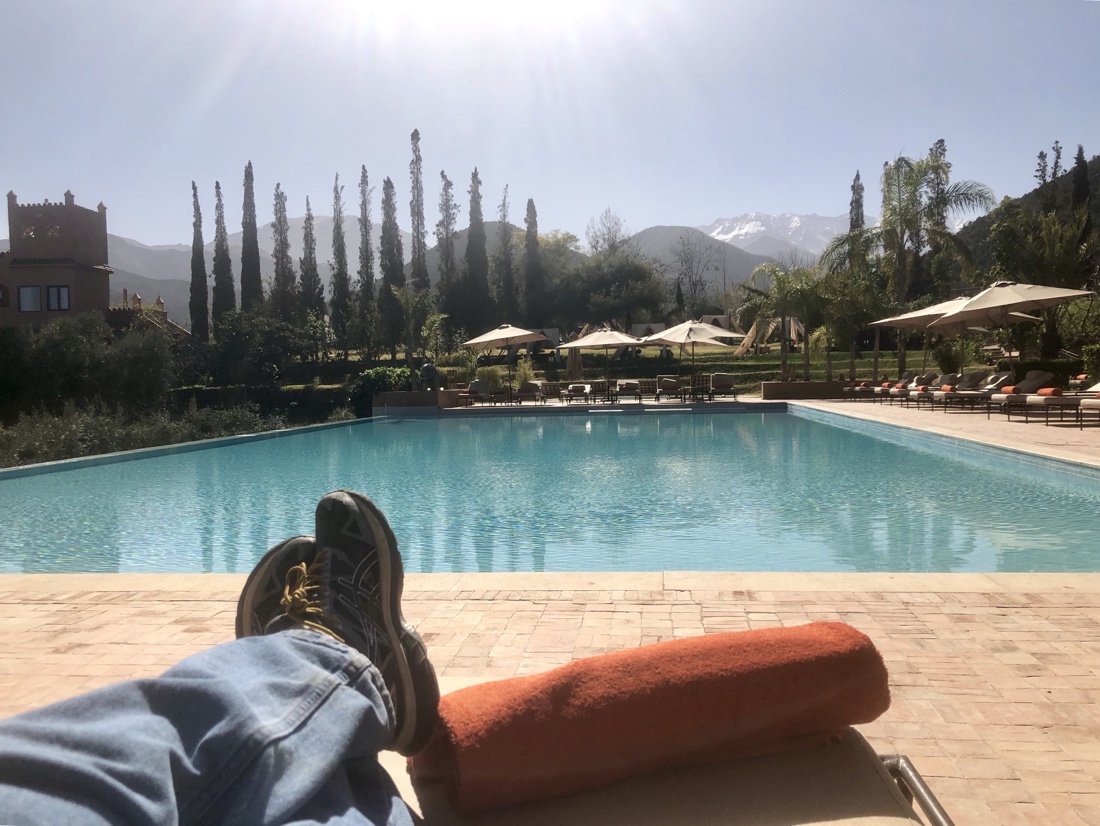
Our driver, Moustaffa, picks us up at noon to drive to the Casablanca airport. The road from the hotel is steep and winding. All-beige towns blend into the landscape. Sheep and goats appear periodically by the roadside, and life goes on in the villages we pass through.
We drive through the new part of Marrakech, which could be pretty-much any modern city, except that everything is in beige tones. A beautiful new train station houses a McDonald’s, easily visible as we drive by. Our contribution to Moroccan culture.
Just had the highlight of our trip. Checked in at the Casablanca airport for this evening’s flight to Madrid, flying to ORD at 11:35 AM tomorrow, and they checked our bags thru to ORD. I had specifically asked our fancy Kasbah Tamadot people to check whether this would be possible yesterday, and they reported that it would not. Just reinforces my view that you never trust nothing that nobody tells you. Now, of course, our bags may not make it to ORD, but I’m not sure I much care. Losing them would be a fair trade for not having to schlep them to and from the hotel in Madrid, and retrieve and recheck them. The fast track service our travel agent has arranged through immigration saves us considerable time and allows us to spend an hour in the VIP Lounge.
On the bus that ferries us to the plane, I strike up a conversation with a young guy who has been in the desert in Morocco for a week, training for a motorcycle race that’s coming up soon in Dubai. Boarding the plane, it turns out that his seat is a row in front of ours, and there’s an empty seat next to him. Just before takeoff, I leave Carol to her book and slip into the seat next to my new friend, Andrew Short. https://www.dakar.com/en/competitor/29 I quiz him about the type of racing he does, which is basically unheard of in the US, but popular in much of the rest of the world. He’s old for the sport, thirty-six, the father of 11- and 8-year old children, and says he’ll only race for another one or two years, but he clearly loves the challenge, excitement and strategy involved. His Dubai team will consist of three of its usual six members, the other three having sustained serious injuries in the last race. Weighing the pros and cons carefully, I’ve pretty-much decided not to throw my helmet into the ring to pursue this as my next career.
We arrive in Madrid at sunset 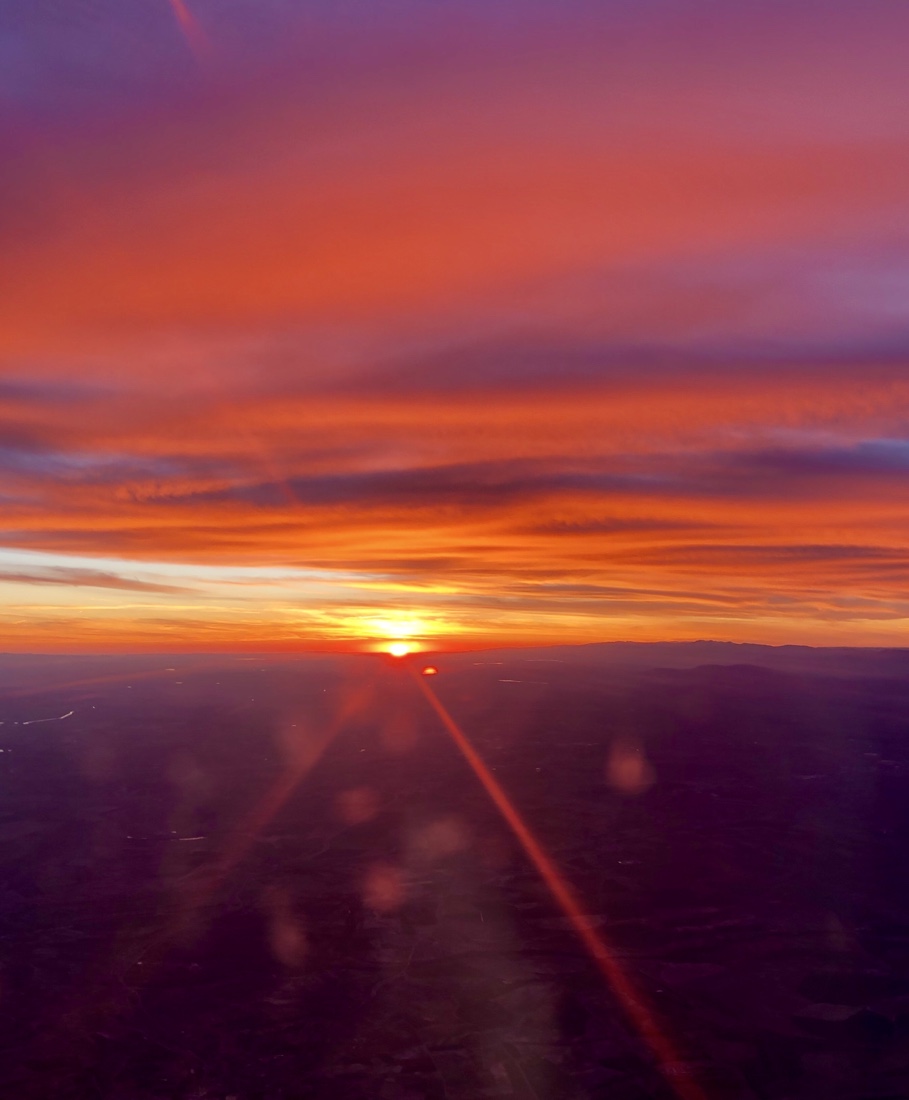 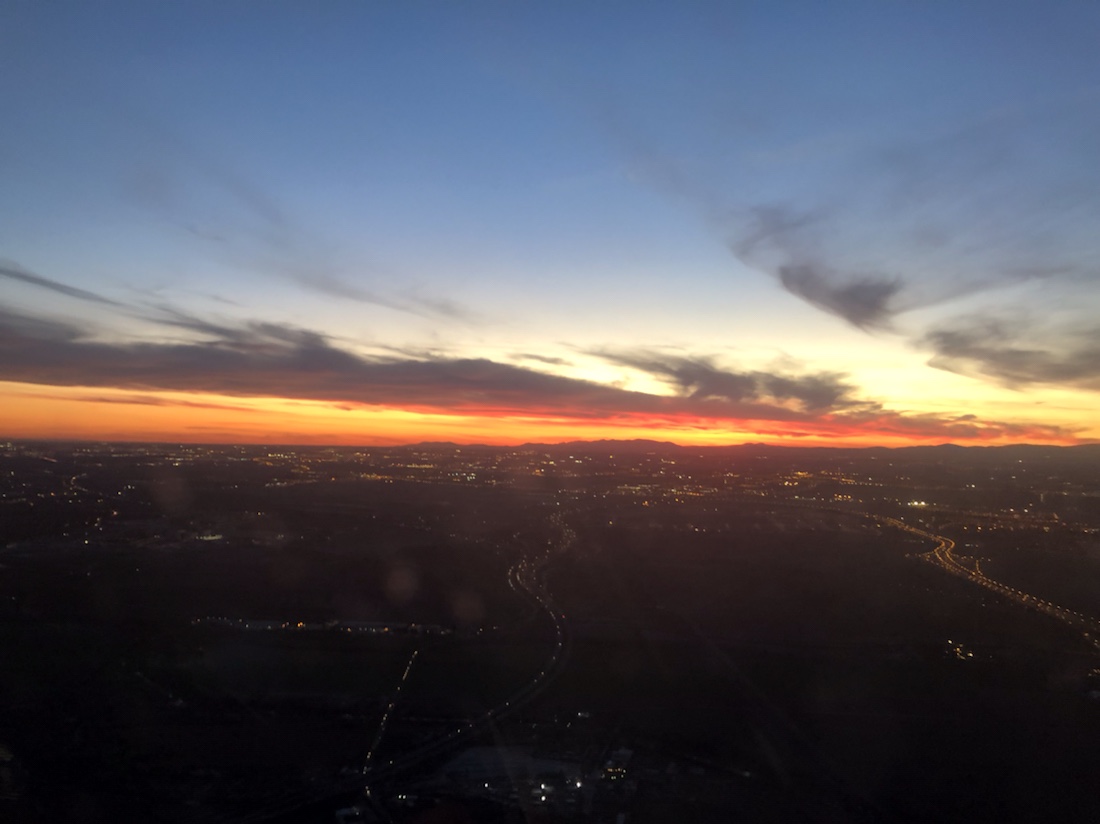
clear customs and, after quite a long wait, take the shuttle to the Hilton. Have I mentioned how nice it is not to have four more bags? The hotel is actually quite nice, for an airport hotel. We go down for a late dinner, Carol not eating, then retire.
|
|










 We walk around downtown Joburg, which looks much like any large city on a Friday afternoon. Though the city has a reputation of not being very safe, I would not have felt that way except that Freedom and Angus repeatedly warned me to guard and hang on tight to any valuables.We had lunch at a venerable old club, the Rand Cub, that was a power center, not open to women until a few years ago, in the days when gold ruled Joburg, in the late 19th and early 20th century.
We walk around downtown Joburg, which looks much like any large city on a Friday afternoon. Though the city has a reputation of not being very safe, I would not have felt that way except that Freedom and Angus repeatedly warned me to guard and hang on tight to any valuables.We had lunch at a venerable old club, the Rand Cub, that was a power center, not open to women until a few years ago, in the days when gold ruled Joburg, in the late 19th and early 20th century.






 I did not take many photos, compared to what I might usually take on a trip of that length, probably 800-900. I look forward to spending a lot more time with these photos after this trip. I expect that I’ll take many more photos on this trip, since it is, specifically, a photo trip.
I did not take many photos, compared to what I might usually take on a trip of that length, probably 800-900. I look forward to spending a lot more time with these photos after this trip. I expect that I’ll take many more photos on this trip, since it is, specifically, a photo trip. This photo, of Albie Sachs and his partner, Vanessa, was taken 16 years ago in Capetown, on a trip we took with our friends, Judd and Linda Miner and Bob Bennett and Harriet Trop. This was Carol and my first trip to Africa, and may well still be our favorite trip, ever.
This photo, of Albie Sachs and his partner, Vanessa, was taken 16 years ago in Capetown, on a trip we took with our friends, Judd and Linda Miner and Bob Bennett and Harriet Trop. This was Carol and my first trip to Africa, and may well still be our favorite trip, ever. You’ll see nothing like that on this trip, because, having done a half dozen or so safaris, I’m not doing the safari extension to this trip. I’m going to see people.
You’ll see nothing like that on this trip, because, having done a half dozen or so safaris, I’m not doing the safari extension to this trip. I’m going to see people. where we have a couple hours to breakfast and hang out in the VIP Lounge before our non-stop 9-hour flight home. For those of you who recall the opening posts of this trip in which photos of our luggage 51 years ago and on this trip were included, here’s a photo of the entire luggage Carol and I are toting right now.
where we have a couple hours to breakfast and hang out in the VIP Lounge before our non-stop 9-hour flight home. For those of you who recall the opening posts of this trip in which photos of our luggage 51 years ago and on this trip were included, here’s a photo of the entire luggage Carol and I are toting right now.




